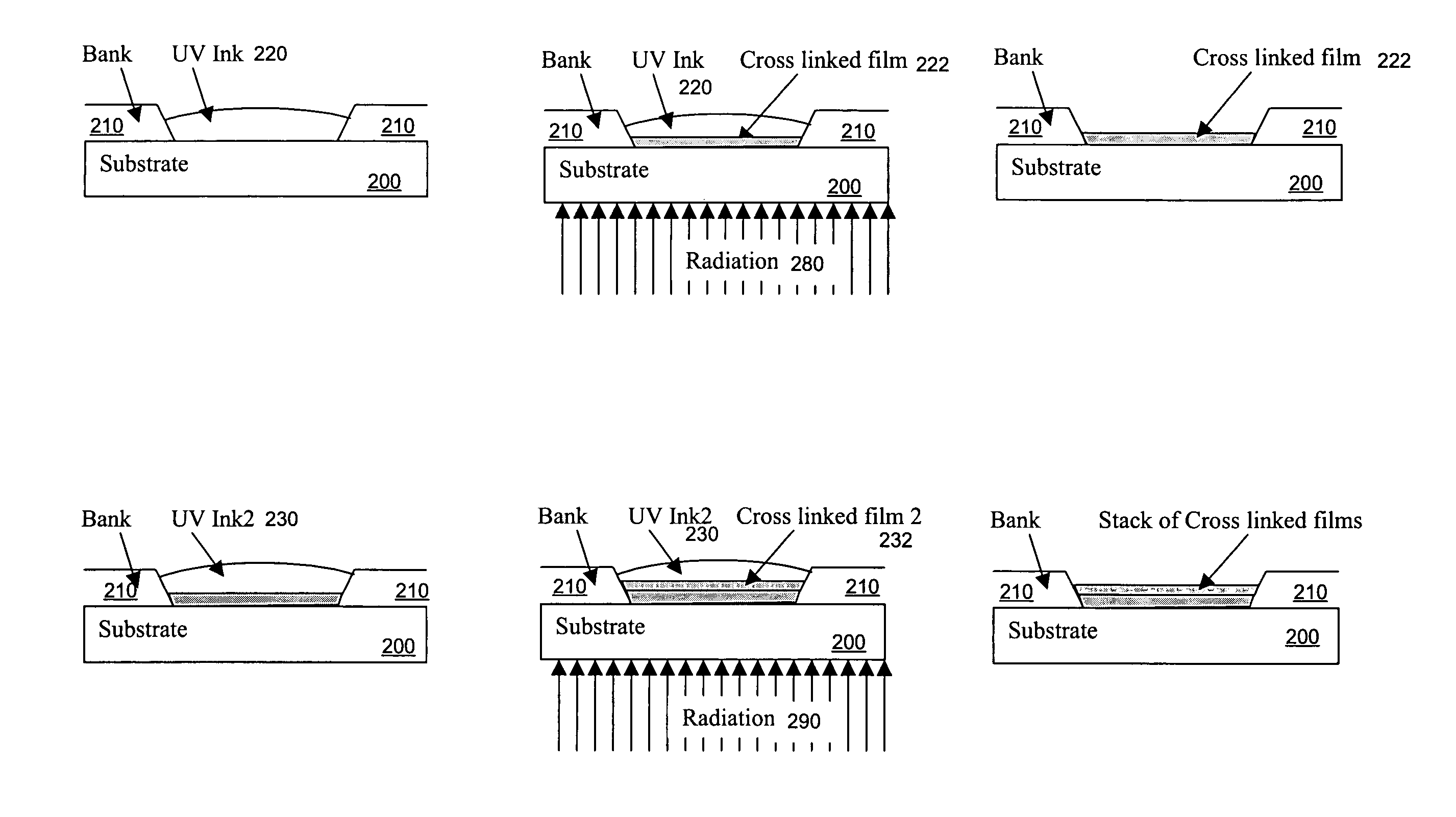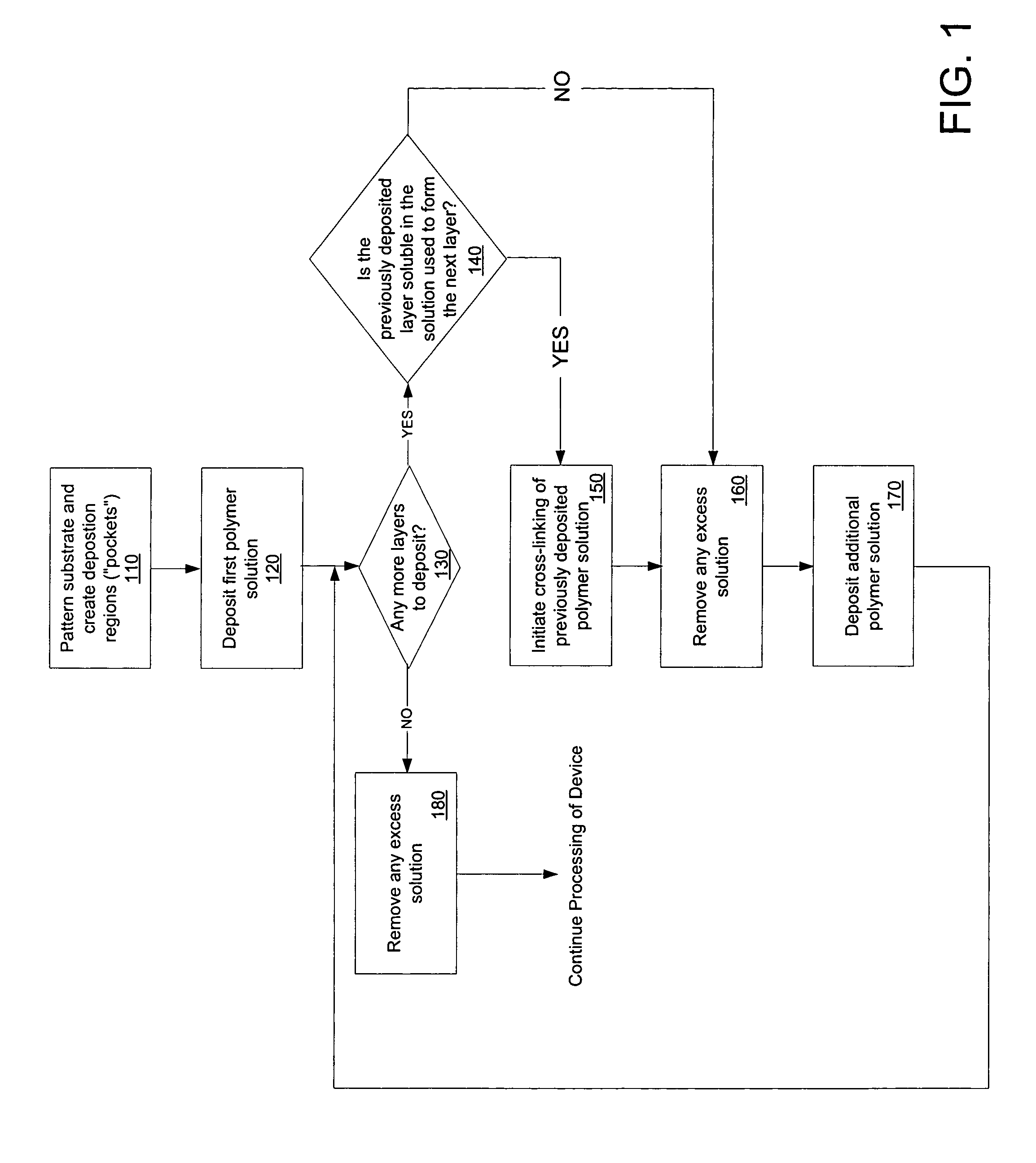Method for printing organic devices
a technology of thin film and organic material, applied in the direction of solid-state devices, thermoelectric devices, semiconductor devices, etc., can solve the problems of inability to achieve multi-layer or hetero-, existing layer cannot be made of a material which will not be soluble, and the inability to achieve multi-layer or hetero-, existing layer can only be made of a material
- Summary
- Abstract
- Description
- Claims
- Application Information
AI Technical Summary
Problems solved by technology
Method used
Image
Examples
Embodiment Construction
[0016] In accordance with the invention, a method for fabricating an organic electronic device is disclosed. The method consists primarily of 1) depositing a first organic solution by inkjet or other techniques, 2) cross-linking the deposited and dried (or partially dry or not dried organic film resulting therefrom), and then 3) depositing a second organic solution over the cross-linked film. This process can be extended to create hetero-structure devices containing three or more layers of film as well. Cross-linking is desirable if a previously deposited layer / film is soluble in the organic solution that is to follow. In such a case, cross-linking of the previously formed organic layer will cause it to become insoluble and thus, will prevent that layer from being degraded by another organic solution that is deposited over it.
[0017] In one embodiment of the invention, the organic solution used in fabricating the organic electronic device includes UV (ultra-violet) curable inks. UV ...
PUM
| Property | Measurement | Unit |
|---|---|---|
| work function | aaaaa | aaaaa |
| thickness | aaaaa | aaaaa |
| thickness | aaaaa | aaaaa |
Abstract
Description
Claims
Application Information
 Login to View More
Login to View More - R&D
- Intellectual Property
- Life Sciences
- Materials
- Tech Scout
- Unparalleled Data Quality
- Higher Quality Content
- 60% Fewer Hallucinations
Browse by: Latest US Patents, China's latest patents, Technical Efficacy Thesaurus, Application Domain, Technology Topic, Popular Technical Reports.
© 2025 PatSnap. All rights reserved.Legal|Privacy policy|Modern Slavery Act Transparency Statement|Sitemap|About US| Contact US: help@patsnap.com



